type
tags
category
icon
password
Multi-select
优先级
重要度
状态 2
预计结束时间
添加日期
URL
状态
分类(人工)
总结(AI 摘要)
status
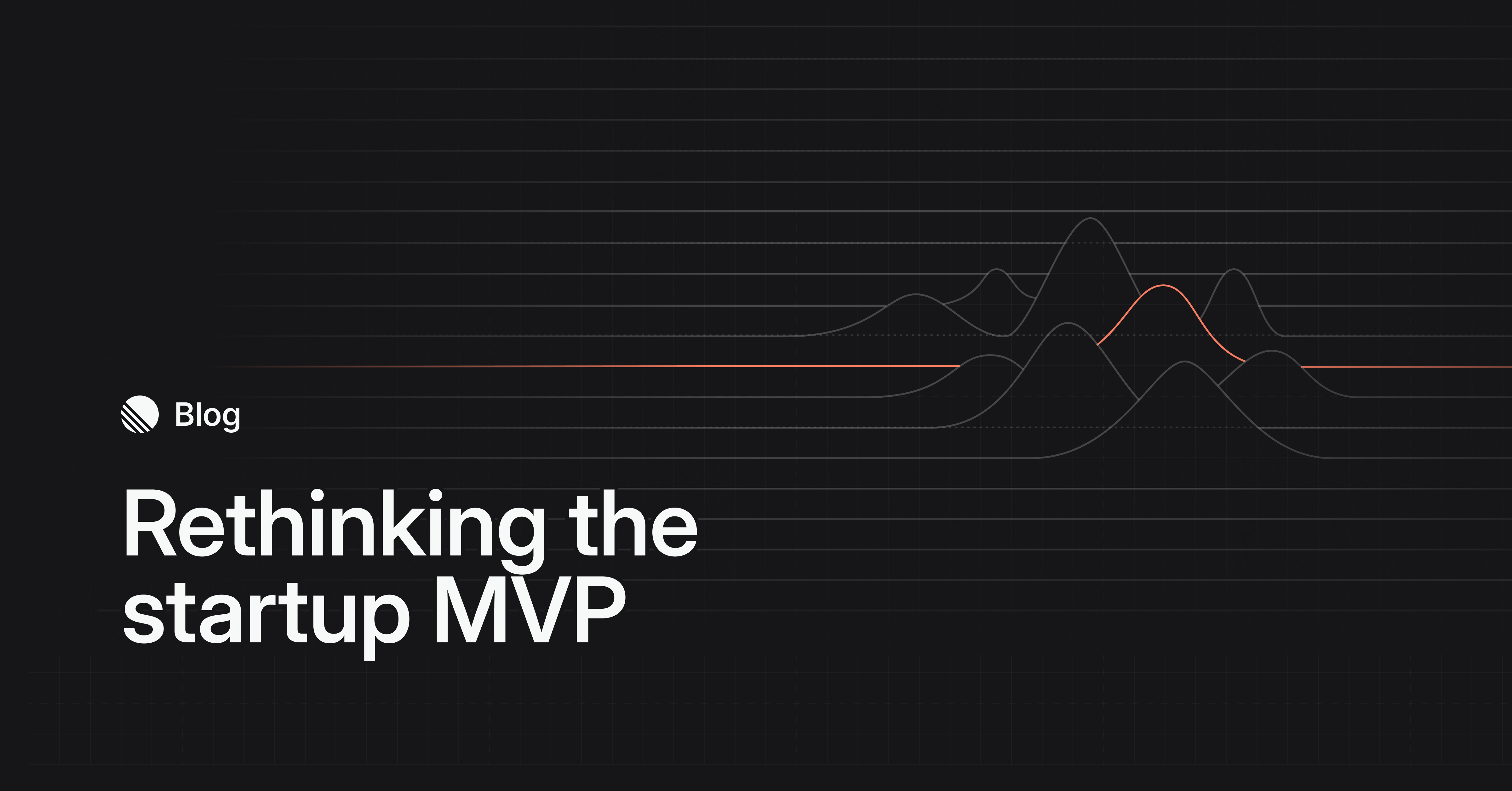
Today's Minimum Viable Product (MVP) is often about building a better version of an idea, not validating a novel one. It’s not good enough to be first with an idea. You have to out-execute from day 1.
如今的最小可行产品 (MVP) 通常致力于构建一个更好的想法,而不是验证一个新颖的想法。仅仅成为第一个提出想法的人是不够的。你必须从第一天起就表现出色。
The minimum viable product, as many founders know it, doesn't reflect the reality of how products get built today.
许多创始人都知道,最小可行产品并不能反映当今产品制造的现实。
Building something valuable is no longer about validating a novel idea as fast as possible. Instead, the modern MVP exercise is about building a version of an idea that is different from and better than what exists today. Most of us aren’t building for a net-new market. Rather, we’re finding opportunities to improve existing categories. We need an MVP concept that helps founders and product leaders iterate on their early ideas to compete in an existing market.
构建有价值的东西不再只是尽快验证一个新奇的想法。相反,现代的 MVP 实践是构建_一个与现有想法不同且更好的版本_ 。我们大多数人并非为一个全新的市场而构建,而是在寻找改进现有产品类别的机会。我们需要一个 MVP 概念,帮助创始人和产品负责人迭代他们的早期想法,以便在现有市场中竞争。
When we started to build our MVP for Linear, we spent a lot of time talking to users, narrowed our audience, and tested what we were building. And it taught us some important lessons about our product (and building great products in general).
当我们开始为 Linear 构建 MVP 时,我们花了大量时间与用户沟通,缩小了受众范围,并测试了我们正在构建的产品。这让我们学到了一些关于产品(以及构建优秀产品)的重要经验。
Below, I’ll discuss why building in today’s market requires an updated concept of the MVP, the importance of narrowing who you’re building for, the power of strategically using your waitlist, and some indicators you’ll see when you’ve found early product market fit.
下面,我将讨论为什么在当今市场中构建需要更新的 MVP 概念、缩小构建目标的重要性、战略性地使用等待名单的力量,以及在找到早期产品市场契合度时会看到的一些指标。
The MVP is a journey, not one moment in time MVP 是一段旅程,而不是某个时刻
The MVP as a practice of building a hacky product as quickly and cheaply as possible to validate the product does no longer work. Many product categories are already saturated with a variety of alternatives, and to truly test the viability of any new idea you need to build something that is substantially better.
MVP 作为一种尽可能快速且低成本地构建一个 hacky 产品来验证产品的做法,已经不再有效。许多产品类别已经饱和,充斥着各种各样的替代品,要真正测试任何新想法的可行性,你需要构建一个比它好得多的产品。
The MVP as we knew it before
In 2011, Eric Reis described the MVP in his book The Lean Startup as “the minimum viable product is that version of a new product which allows a team to collect the maximum amount of validated learning about customers with the least effort.”
2011 年,Eric Reis 在其著作 《精益创业》 中将 MVP 描述为“最小可行产品是新产品的一个版本,它允许团队以最少的努力收集关于客户的最大数量的经过验证的知识。”
He conveyed that if you have an idea and you don’t know if it will succeed at market, you need to quickly build something to validate it. This validation could take many forms, such as a prototype, pamphlets describing your idea, or a commitment form. This worked years ago when you needed quick validation for a novel idea or service concept and there weren't as many existing variations of that idea.
他表示,如果你有一个想法,但不知道它能否在市场上成功,你需要快速构建一些东西来验证它。验证可以采取多种形式,例如原型、描述你想法的小册子或承诺书。几年前,当你需要快速验证一个新颖的想法或服务理念,而这个想法的现有变体又不多时,这种方法就很有效。
For example, Airbnb wanted to build a service that relied on people being comfortable spending the night at a stranger’s house. When they started in 2009, it wasn’t obvious if people were ready for this. Today, it’s obvious that it works, so they wouldn’t need to validate the idea. A similar analogy works for Lyft when they started exploring ridesharing as a concept.
例如,Airbnb 想要打造一项服务,让人们感到舒适地在陌生人家过夜。2009 年他们刚起步时,并不清楚人们是否做好了准备。如今,这项服务显然行之有效,所以他们无需验证这个想法。Lyft 刚开始探索拼车概念时,也经历了类似的情况。
The MVP as it exists today


The MVP as we knew it vs how it is today
我们所知的 MVP 与如今的 MVP
Today, the MVP is no longer about validating a novel idea as quickly as possible. Rather, its aim is to create a compelling product that draws in the early users in order to gather feedback that you then use to sharpen the product into the best version of many.
如今,MVP 不再是为了尽快验证一个新奇的想法。相反,它的目标是创造一款引人入胜的产品,吸引早期用户,从而收集反馈,并根据这些反馈将产品打磨成众多版本中的最佳版本。
If you look at successful companies that have IPO'd in the recent years–Zoom, Slack, TikTok, Snowflake, Robinhood–you see examples not of novel ideas, but of these highly-refined ideas.
如果你看看近年来成功上市的公司——Zoom、Slack、TikTok、Snowflake、Robinhood——你看到的不是新颖的想法,而是高度精炼的想法。
Since many of us are building in a crowded market, the bar for a competitive, public-ready MVP is much higher than the MVP for a novel idea, since users have options. To get to this high bar, we have to spend more time refining the initial version.
由于我们许多人都身处一个拥挤的市场,一个具有竞争力、面向公众的 MVP 的门槛远高于一个新颖创意的 MVP,因为用户有多种选择。为了达到这个高标准,我们必须花费更多时间来完善初始版本。
The original MVP idea can still work if you’re in the fortunate position of creating a wholly new category of product or work with new technology platforms, but that becomes rarer and rarer as time goes on.
如果您有幸创造出一种全新的产品类别或使用新的技术平台,那么最初的 MVP 想法仍然有效,但随着时间的推移,这种情况会变得越来越少。
Founders and product leaders must refine their visions and audiences and relentlessly iterate based on user feedback to build great products. The MVP process then becomes a journey to figure out if there’s something in an existing category the market wants improved.
创始人和产品负责人必须完善他们的愿景和目标受众,并根据用户反馈不断迭代,打造出优秀的产品。MVP 流程就变成了一段旅程,去探索现有产品类别中是否存在市场亟待改进的地方。
Let’s jump over the regular startup journey that you might take today when building a new product:
让我们先来回顾一下今天构建新产品时可能经历的常规创业历程:
- You start with the idea on how you want to improve on existing products in a category. 您首先要考虑如何改进某一类别的现有产品。
- You build your first prototype. 您构建了第一个原型。
- You iterate with your vision and based on feedback from early users. 您可以根据自己的愿景和早期用户的反馈进行迭代 。
- You get an inkling of product market fit and traction. 您会对产品市场契合度和吸引力有所了解。
- Optional: You start fundraising (with demonstrable traction). 可选: 您开始筹集资金 (具有可证明的吸引力)。
- Optional: You scale your team, improve the product, and go to market. 可选: 扩大您的团队, 改进产品,并进入市场 。
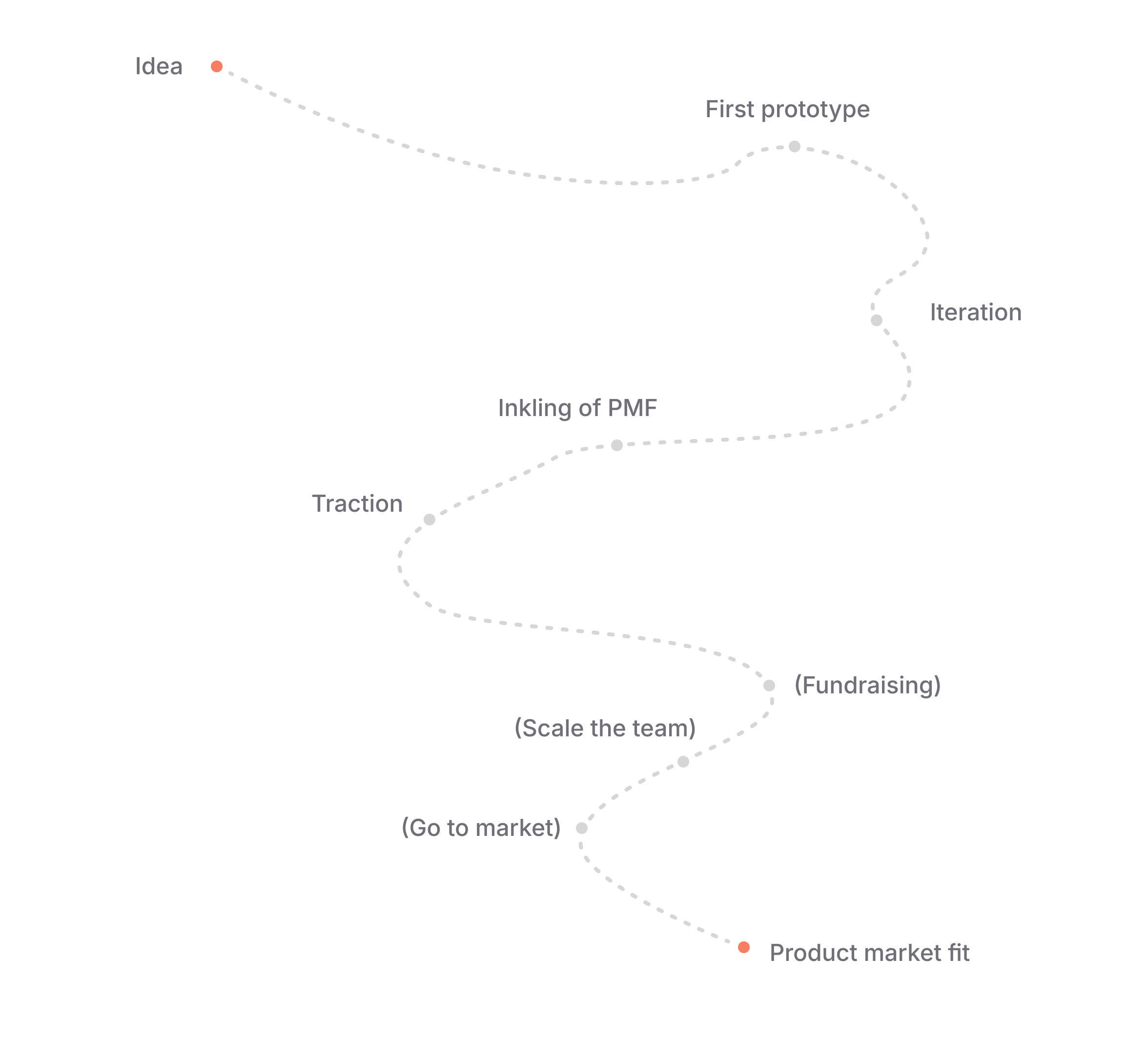
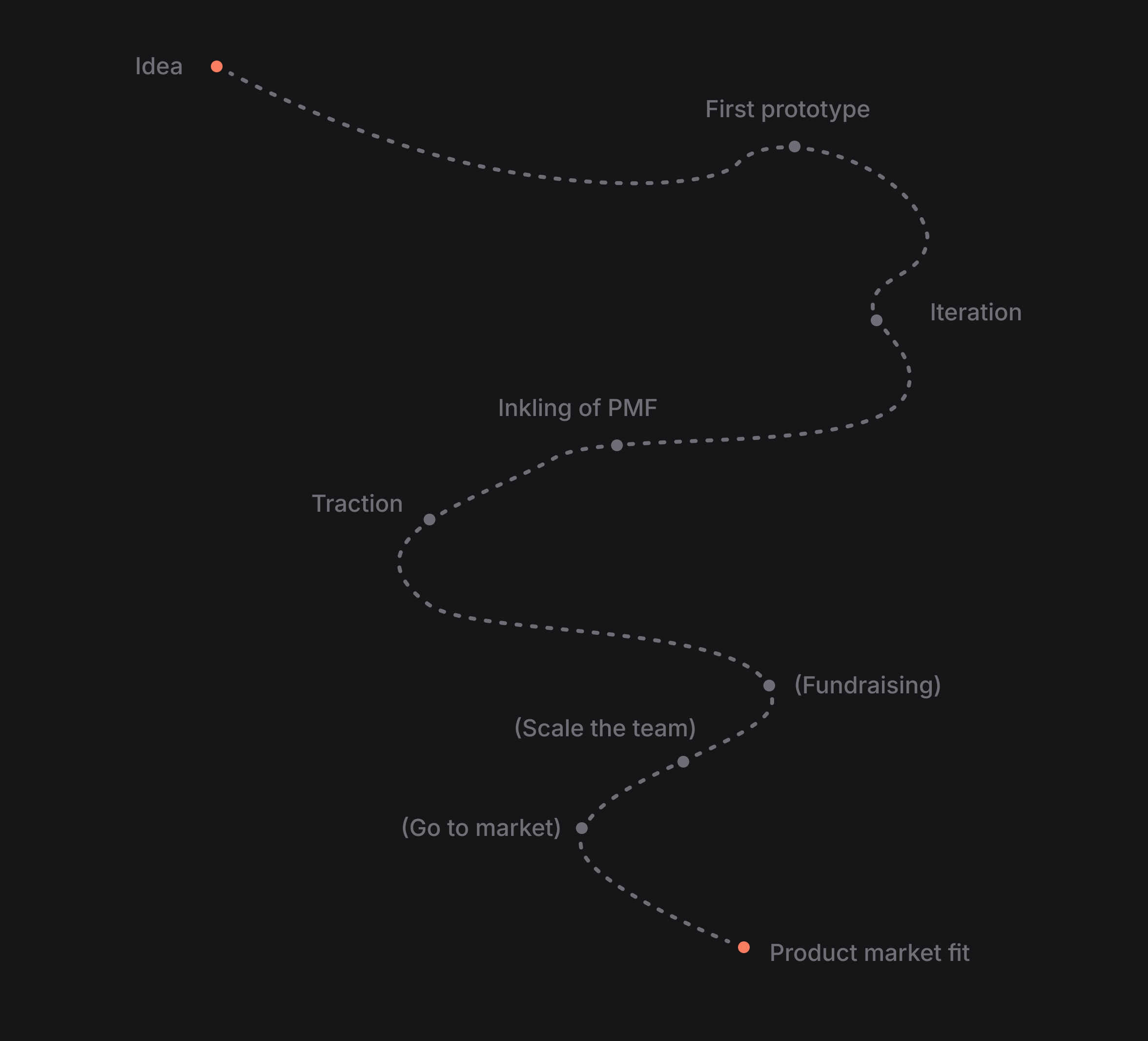
The winding journey from idea to product market fit
从创意到产品市场契合的曲折历程
The role of the MVP journey is to demonstrate your idea has potential in the market, and – if you’re not bootstrapping the journey yourself – get your startup ready to raise funds. And you have to do this with limited resources.
MVP 之旅的作用是展示你的想法在市场上的潜力,并且——如果你不是自己启动这个旅程的话——让你的初创公司做好融资的准备。你必须在有限的资源下做到这一点。
The importance of narrowing your users 缩小用户范围的重要性
The first key lesson we learned during our MVP process was to scope down who we were building for as much as possible.
我们在 MVP 过程中学到的第一个重要教训是尽可能缩小我们为谁构建的范围。
In today’s landscape, you’re likely competing against many other products. To win, you have to build a product that provides more value to your users than your competition does.
在当今的市场环境下,你很可能要与许多其他产品竞争。要想获胜,你必须打造一款比竞争对手更能为用户提供价值的产品。
To be able to do this with limited resources, you must scope down your audience (and thus your ambitions) as much as possible to make competing easier, and aim to solve the problems of specific people.
为了能够利用有限的资源做到这一点,您必须尽可能缩小受众范围(从而缩小您的抱负),以使竞争更容易,并致力于解决特定人群的问题 。
When we started Linear, our vision was to become the standard of how software is built. This is not really something you can expect to do during your early startup journey, let alone in an MVP. But you should demonstrate you have the ability to achieve your bigger vision via your early bets. We chose to do this by focusing on IC’s at small startups. We started with the smallest atomic unit of work they actually needed help with: issue tracking.
创立 Linear 时,我们的愿景是成为软件构建的标准。这在早期创业公司中很难实现,更不用说在 MVP 阶段了。但你应该证明,你有能力通过早期的投入实现更大的愿景。我们选择通过专注于小型初创公司的 IC 来实现这一目标。我们从他们真正需要帮助的最小原子工作单元开始:问题跟踪。
Something that helped immensely was that we were our own ideal customer profile. We could build a product for ourselves. We knew we wanted our product to demonstrate three values:
对我们帮助最大的是,我们自己就是理想的客户群体。我们可以为自己打造产品。我们知道,我们希望我们的产品能够体现以下三个价值观:
- It should be as fast as possible (local data storage, no page reloads, available offline). 它应该尽可能快 (本地数据存储,无需重新加载页面,可离线使用)。
- It should be modern (keyboard shortcuts, command menu, contextual menus). 它应该是现代的 (键盘快捷键、命令菜单、上下文菜单)。
- It should be multiplayer (real-time sync and teammates presence). 它应该是多人游戏 (实时同步和队友在场)。
Once we had built something for ourselves that we thought was valuable, we needed real user feedback. This is an extremely important step of the MVP journey—don’t underestimate it. Engage with users, have conversations with real people, gather their insights and evolve from it.
一旦我们构建出我们认为有价值的东西,就需要真实的用户反馈。这是 MVP 之旅中极其重要的一步——千万不要低估它。与用户互动,与真实的人交流,收集他们的见解,并以此为基础不断改进。
Don’t just ask your friends though. When we first started, I did this and my friend came back and said his current solution was fast enough, he didn’t need shortcuts, and he didn’t care about multiplayer.
不过,别只问你的朋友。我们刚开始的时候,我就是这么做的,我朋友回来后说他现在的解决方案已经够快了,不需要捷径,而且他也不介意多人游戏。
The power of the waitlist 候补名单的力量
After the prototyping stage and getting some small group feedback from early users, you need to build awareness around your product to get a bigger pool of people interested in your product and ready to try it out. One way to achieve this is to build a waitlist of target users, invite them in small groups, learn from what they do with the product, interview them, and get feedback and insight into shortcomings.
在原型设计阶段结束后,从早期用户那里获得一些小组反馈,你需要提升产品的知名度,吸引更多人对你的产品感兴趣并愿意尝试。实现这一点的一个方法是建立一个目标用户的候补名单,邀请他们组成小组,观察他们使用产品的情况,并进行访谈,收集反馈,了解产品的不足之处。
The second lesson we learned: The waitlist is a great tool to maintain the narrow focus and bring in the right kind of early adopters.
我们学到的第二个教训是:等候名单是一个很好的工具,可以保持狭窄的焦点并吸引合适的早期采用者。
How to build your waitlist
To build your pool of beta users to learn from, you need some mechanism for amassing a waitlist with a large variety of users or a smaller, targeted list with just the right people.
为了建立可供学习的 beta 用户库,您需要某种机制来积累包含大量用户的候补名单,或者包含合适人员的较小的目标名单。
There are a few ways to go about this, but the quickest (if you’re able) is to leverage your social following. If you don’t already have a social platform to build from, partnering with leaders in your personal network, investors, and community influencers can help you reach the right people. The goal is to create a list of people who are interested in what you’re building, and who you can pressure test your product against to refine it into something great.
有几种方法可以做到这一点,但最快的方法(如果你有能力的话)是利用你的社交粉丝。如果你还没有一个社交平台可以借鉴,那么与你人脉圈中的领导者、投资者和社区影响力人士合作可以帮助你接触到合适的人。目标是创建一个对你正在开发的产品感兴趣的人名单,你可以向他们进行压力测试,以完善你的产品,最终使其成为一款优秀的产品。
Remember, you’re likely not building a revolutionary or novel product. You’re unlikely to go viral with your announcement, so you need a network of people who understand the “why” behind your product to help spread the word to drive people to sign up. Any product category has many people who are frustrated with the existing tools or ways of working. Ideally you find and are able to reach out to those people.
记住,你很可能不会打造一款革命性或新颖的产品。你的产品不太可能像病毒式传播一样迅速传播,所以你需要一个了解你产品背后“原因”的人脉网络来帮助传播,从而吸引人们注册。任何产品类别都会有许多人对现有的工具或工作方式感到失望。理想情况下,你应该找到并联系到这些人。
How to use your waitlist to build a high-impact product
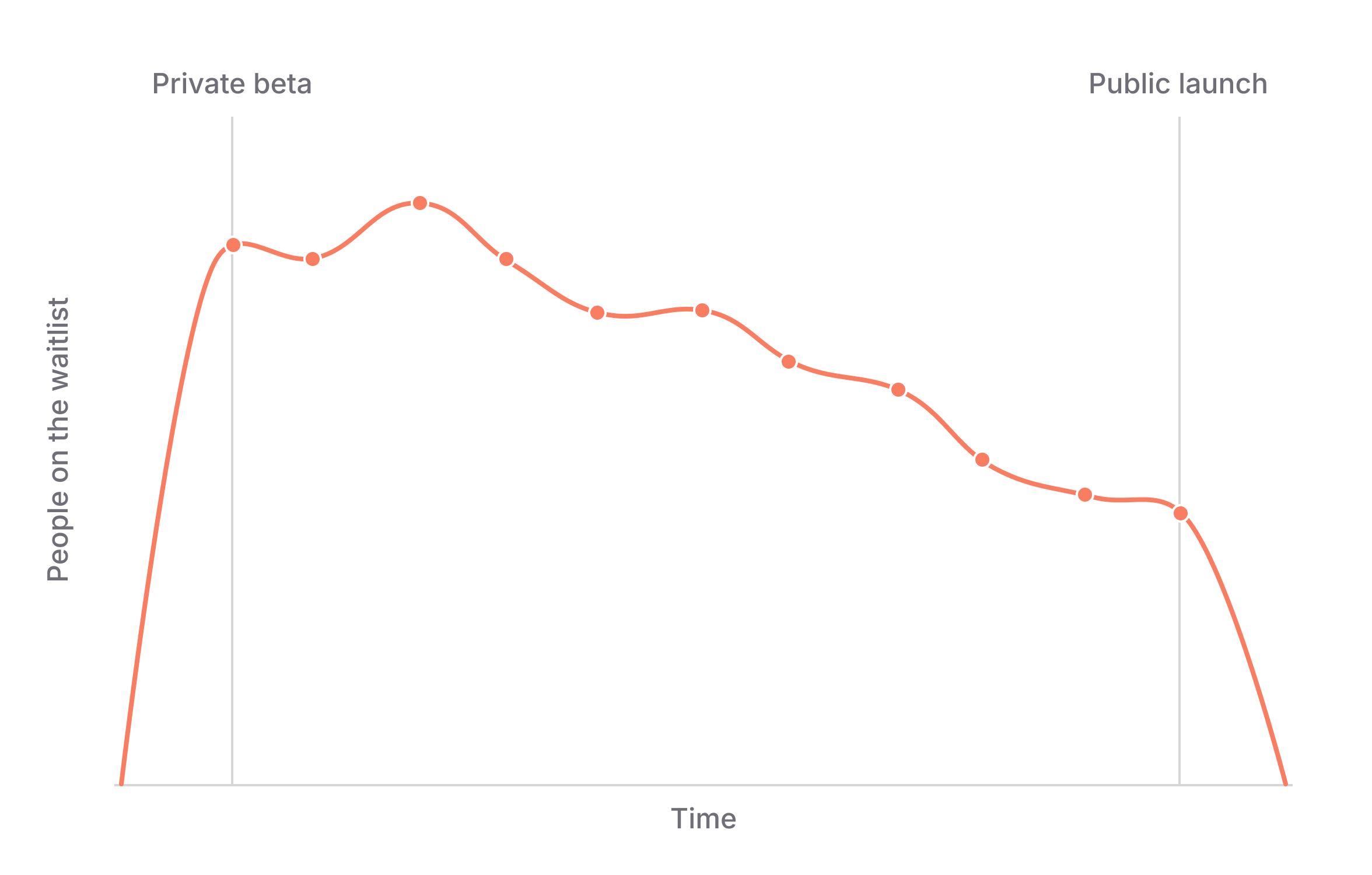
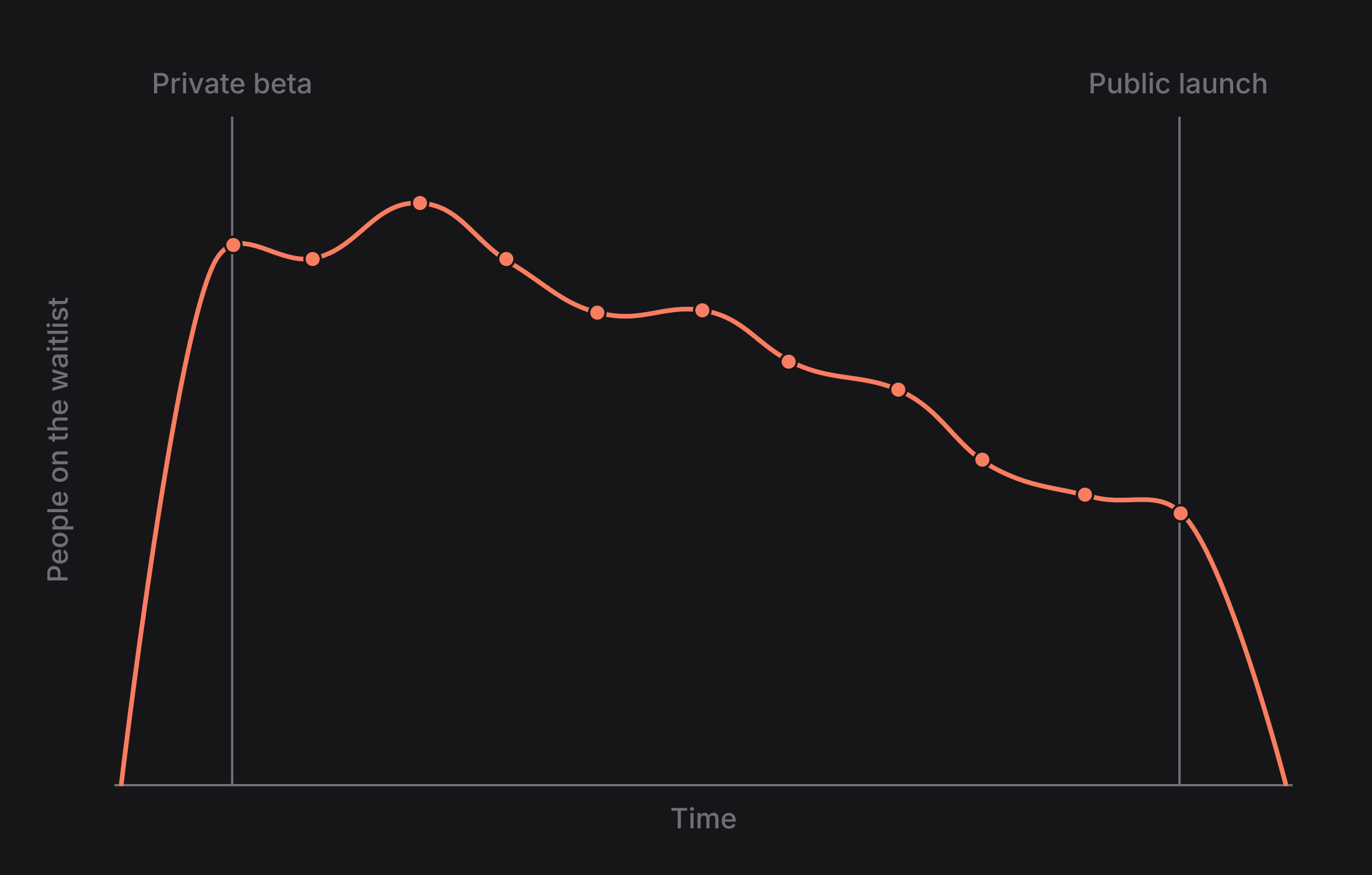
Draw from your waitlist over time to continuously refine your product before launch.
随着时间的推移,从您的候补名单中提取信息,以便在产品发布之前不断完善您的产品。
Once you have a bunch of people on your waitlist, you need to invite the right users at each stage of your iteration. You want to invite people who are likely to be happy with the limited set of features you’ve built so far. Otherwise, they’ll churn straight away and you’ll learn nothing.
一旦你的候补名单上有一大批用户,你就需要在迭代的每个阶段邀请_合适的_用户。你应该邀请那些可能对你目前构建的有限功能感到满意的用户。否则,他们会立即流失,你什么也学不到。
To do this, we asked people a few basic questions when they signed up onto our waitlist:
为此,我们在人们注册候补名单时询问了他们几个基本问题:
- What’s the size of your company? 贵公司的规模有多大?
- What’s your role? 你的角色是什么?
- What project management solution are you currently using? 您目前正在使用什么项目管理解决方案?
- What version control system are you using? 您使用什么版本控制系统?
- Why do you want to try Linear? 为什么你想尝试 Linear?
- What’s your pet peeve with current solutions? 您对目前的解决方案最不满的是什么?
We only had a GitHub integration to start, so we filtered the responses to make sure we were only inviting people who could actually use the product. We then handpicked founders of small companies with pet peeves we were already addressing. Founders are usually happy to chat and are also more forgiving if functionality is missing (if they believe in the direction of the product). This gave us a good initial user set that didn’t churn, and that we could have frequent conversations with to understand the shortcomings of our prototype.
我们最初只有一个 GitHub 集成,所以我们筛选了回复,以确保只邀请那些真正能用上产品的人。之后,我们精心挑选了一些小公司的创始人,他们有一些我们之前已经解决过的问题。创始人通常很乐意聊天,如果功能缺失(如果他们相信产品的发展方向),他们也会更宽容。这为我们积累了一批优秀的初始用户,他们不会流失,我们也可以与他们频繁沟通,了解原型的不足之处。
Then, you start addressing the feedback of your early users and prioritize functionality accordingly. When your users stop asking for new features, this is a good indication it’s time to pull in more people from the waitlist and expand your target segment a bit as well.
然后,开始处理早期用户的反馈,并相应地确定功能的优先级。当用户不再要求新功能时,这是一个很好的迹象,表明是时候从等待列表中吸引更多用户,并稍微扩大你的目标群体了。
From here, you repeat the cycle, inviting more users from new target audiences, learning from how they use the product, and incorporating their feedback. You effectively turn your waitlist into a more refined product that caters to an ever growing audience.
从这里开始,你不断重复这个循环,邀请更多来自新目标受众的用户,了解他们的产品使用情况,并整合他们的反馈。这样,你就能有效地将你的候补名单打造成一个更精致的产品,以满足不断增长的用户群体的需求。
Indicators you’re ready for public launch 表明您已准备好公开发布
Knowing you’re ready to launch your product publicly comes down to testing user sentiment and trusting your gut.
知道您是否已准备好公开发布您的产品取决于测试用户情绪并相信您的直觉。
Here are three ways to go about testing user sentiment:
以下是测试用户情绪的三种方法:
- Meet with users via Slack, Zoom, or in person and figure out how happy they are 通过 Slack、Zoom 或亲自与用户会面,了解他们的满意度
- Use a product-market fit questionnaire (and ask how they would feel if they suddenly couldn’t use your product tomorrow) 使用产品市场契合度问卷 (并询问如果他们明天突然无法使用您的产品,他们会有什么感受)
- Ask users to pay (the ultimate test) 要求用户付费 (终极测试)
To test willingness to pay, we started with a pay-if-you-want model. Users didn’t have to pay to use Linear during beta, but if they went into their settings, they found a “Friends of Linear” plan offering nothing more than our gratitude.
为了测试用户的付费意愿,我们采用了“按需付费”的模式。在测试期间,用户无需付费即可使用 Linear,但如果他们进入设置,就会发现一个“Linear 之友”计划,除了表达我们的感激之情之外,没有任何额外内容。
After using these methods for a year, we gained the confidence we needed to launch publicly (and then asked users to subscribe to a real paid plan).
使用这些方法一年后,我们获得了公开发布所需的信心(然后要求用户订阅真正的付费计划)。
Public launch and beyond 公开发布及后续
Once you’ve demonstrated value to and incorporated the feedback from your early users, you’re probably ready to open up access and launch publicly. You can continue to use this MVP journey model as your product grows to test new features and offering out with existing customers or new user segments.
一旦你向早期用户展示了产品的价值,并吸收了他们的反馈,你可能就准备好开放访问权限并公开发布了。随着产品的发展,你可以继续使用这个 MVP 旅程模型,测试新功能,并向现有客户或新的用户群体推出产品。
To recap: 回顾一下:
- Narrow down your initial audience and build for them: Figure out who you're building the product for and make the target audience as small as possible before expanding. 缩小最初的受众范围并为他们打造产品: 弄清楚您为谁打造产品,并在扩大目标受众范围之前尽可能缩小目标受众范围。
- Build and leverage your waitlist: The waitlist is the grinding stone with which you can sharpen your idea into something truly valuable that will succeed at market, so use it effectively. 建立并利用您的候补名单: 候补名单是一块磨刀石,您可以用它将您的想法打磨成真正有价值的东西,从而在市场上取得成功,因此请有效地使用它。
- Trust your gut and validate demand with your users: Talk, talk, talk to your users and find out how invested in the product they are (and if they’d be willing to pay) 相信你的直觉并与你的用户验证需求: 交谈、交谈、与你的用户交谈,了解他们对产品的投入程度(以及他们是否愿意付费)
- 作者:xingyan
- 链接:http://blog.xingyan.me/article/21564cad-d821-8039-a20e-ec44bcf4c73b
- 声明:本文采用 CC BY-NC-SA 4.0 许可协议,转载请注明出处。











